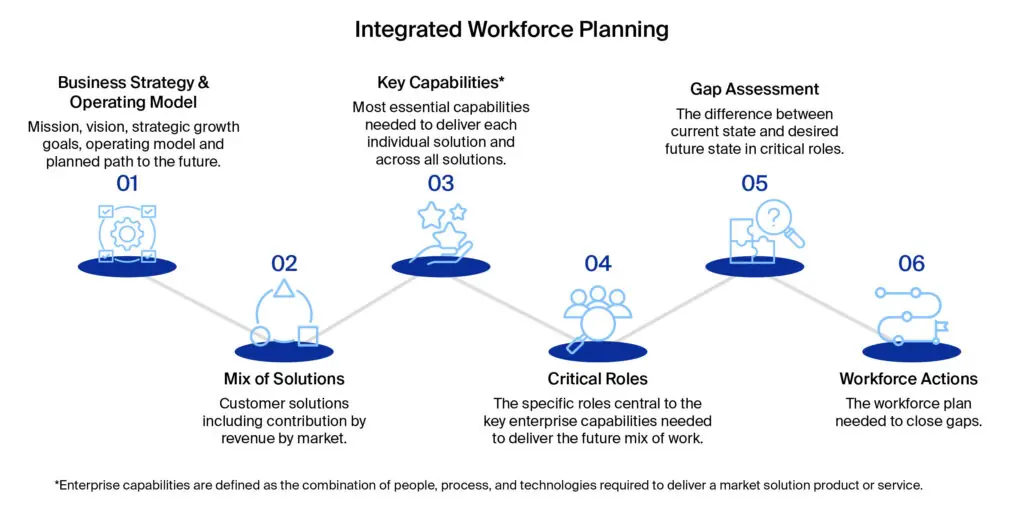Artificial intelligence (AI) and related technologies are fundamentally reshaping the nature of work. With IDC forecasting global spend on AI systems to reach nearly $227 billion in 2025, AI is transforming a range of industries in previously unimaginable ways. Routine transactional tasks are increasingly automated, while agentic-AI is creating new ways of working that are already starting to take over many day-to-day operational functions.
This shift is not only streamlining processes and boosting workforce productivity but is also intensifying competition for talent that can implement and work with AI-related technology. As a result, we are seeing a very high demand for specific technical skill sets. In fact, projections from the U.S. Bureau of Labor Statistics anticipate a 36% growth in data scientist roles through 2033 compared to 4% for all occupations. Despite some very public layoffs in the technology space, our research shows that only 1 out of 2 positions are getting filled in the data science domain specifically.

For now, the adoption of AI seems to be more about human augmentation than wholesale replacement of employees. According to a 2025 report from the Federal Reserve Bank of St. Louis, multiple sectors, from content creation and market research to customer service and software engineering, use generative AI to increase worker productivity by as much as 33%, and we’re just getting started. Yes, there is a lot of talk about an AI bubble, challenges with managing agentic-AI and the like, but the trend towards greater integration and higher operational margins is undeniable.
Notably, more companies are adopting a skills-based approach to talent acquisition, focusing on building strategically important capabilities that will enable business success. For example, nearly 43% of all new graduate hires in public accounting in 2020 were non-accounting majors, suggesting a deliberate move toward integrating “fusion” skill sets that blend technical expertise with traditional roles.
What Got You Here Won’t Get You There
Most people agree with the notion that AI should elevate work performed by humans, allowing people to operate where they add the most value and at the top of each of their individual capability. Elevating more human-centric skills has the added benefit of driving higher levels of engagement and retention because workers are tasked with activities that are more aligned with what they trained for, and what is more satisfying, and of higher value.
Yet not all employees will find it easy to build these more complex skills. In fact, large segments of the workforce risk losing relevance unless they are reskilled or redirected to new types of work or adapt to new ways of working. Much of the onus to make this transition falls on employees themselves, but they cannot succeed without concerted effort and a true partner in their employer. A smart employer will look for ways to make better use of existing employee skill sets, while helping them level up in ways that provide benefits to both.
Technical capabilities, such as digital literacy, analytical planning and execution, solution architecture, and data science, are becoming essential. However, just as important are skills like critical thinking, problem-solving, influencing, and negotiation. Many of these can be taught with a combination of instruction and practice, but softer skills are often hard to learn unless employers step in and provide guidance, mentorship and the right set of experiences.
Ultimately, with more uncertainty about the future, there is a greater emphasis on agility and adaptation. In responding to change, businesses must prioritize both organizational and individual agility, which requires a substantive cultural change.
Enabling an Adaptive Mindset
In lieu of a crystal ball, leaders must develop strategies based on insights to drive change where it is needed the most. This requires implementing an efficient and repeatable process that is integrated into strategic and operational planning. Specifically, leaders need to establish a data-driven process for monitoring, modeling, and scenario planning that continuously translates business strategy into a future mix of work – and then further into the capabilities and talent required to perform that work.
Companies can then actively monitor shifts in the environment, generate insights from different sources of information and rapidly adjust talent and workforce strategies to match. Much of this work can now be automated and accomplished efficiently with AI agents and targeted human oversight to provide context and guidance where it’s needed the most.

Making High Probability Bets
Companies that succeed in times of rapid change excel at identifying trends and understanding their implications for markets, customers, and business operations. They make high-probability bets by confidently adjusting their workforce to align enterprise capabilities with future needs, and those needs are evolving faster than ever before.
Keep in mind that while workforce planning is an important tool, it’s a continuous process that works best when integrated seamlessly into strategy and operating plan development. It’s also not an overnight shift, and the operational changes that drive long-term growth require changes to the operating model, culture and workforce that can take years to achieve. So, making high-confidence, long-term bets early on is critical. Because the most successful and sustainable companies are already taking that next step.
Make Bold Moves
Thank you for your interest in Lotis Blue. Please fill out the form to let us
know how we can help. We’ll be in touch soon.